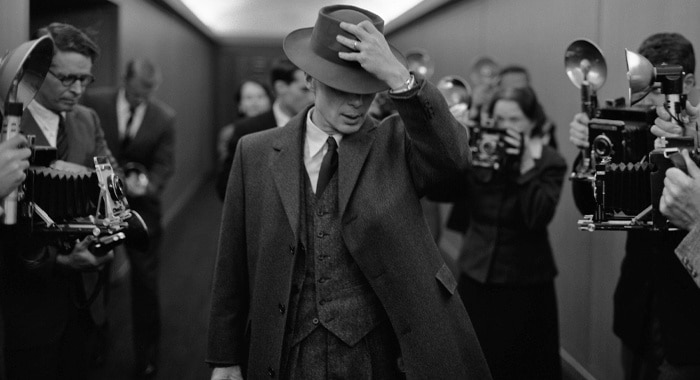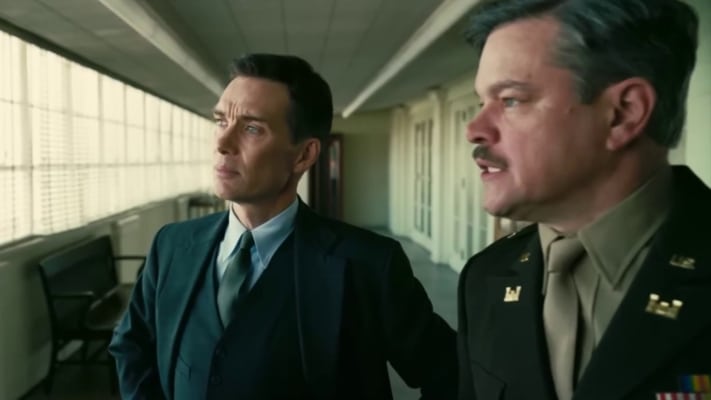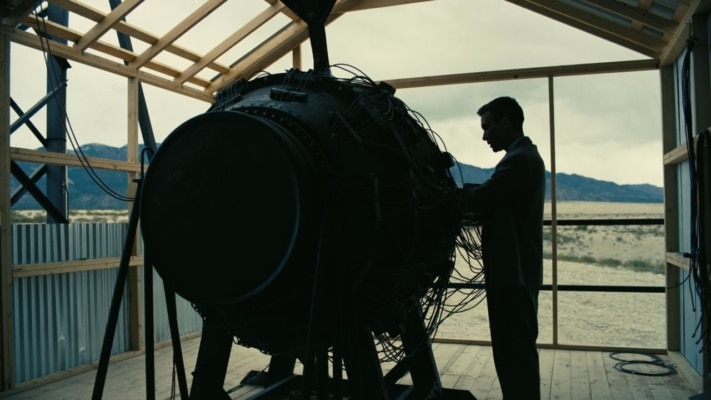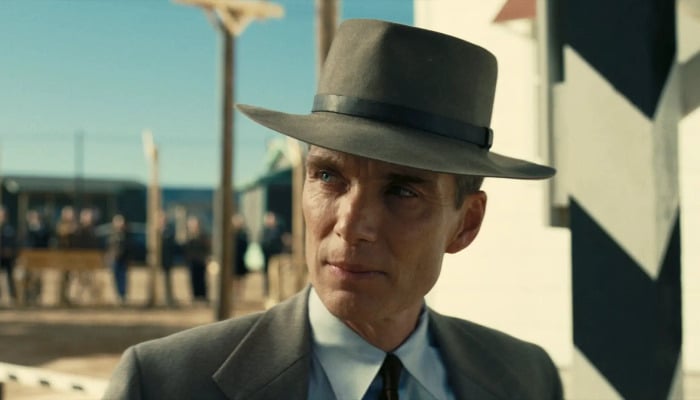“I am become Death, the destroyer of worlds.” Famous but chilling words said by J. Robert Oppenheimer that best summed up the fall of man. Director Christopher Nolan was pitched the idea from producer Charles Roven, which began to bring the story of the American theoretical physicist to life. Nolan’s distinct style of filmmaking could perhaps be the story of the creation of the atomic bomb would need and benefit from.
The complexity of such a momentous feat of humanity holds so much nuance that the director/writer believed he was up for the task. In doing so, Nolan’s latest work comes off as phenomenal.
Oppenheimer follows the story of J. Robert Oppenheimer, played by Cillian Murphy, as he weaves through life and politics in hopes of creating one of the most defining inventions in human history. The film has a long list of actors at the top of their game, those who will be, and those who will always be. Nolan takes up writing duties once again for this movie, though not always a good thing, but this time, the director is back in prime form.

Nolan’s writing style is known to use non-linear storytelling. It works in his filmography – through varying degrees – but Oppenheimer is a story that needs it. The film follows two paths: the theoretical physicist’s recounting of what led to creating the atomic bomb and the narrative of Lewis Strauss, played by Robert Downey Jr. Strauss’s effect on J. Robert had a huge impact on his life, and the two interconnecting stories show it – and ends up being a superb part of the movie.
Oppenheimer has so many moving elements that the director handles them with ease. For instance, the film includes important characters involved in the American theoretical physicist life and important events shaping the man. These components work so effortlessly throughout the movie.
Several poignant moments in the dialogue don’t come off as preachy – and the movie even goes forward after the bombings of Hiroshima and Nagasaki and how Oppenheimer was against using such weapons in the future. On the other hand, some of the writing suffers because of the story’s pacing.

The movie runs for three hours, and certain parts of Oppenheimer feel rushed. Act I and some sections of Act II aren’t given enough time to breathe. Interestingly, Nolan stumbles with this aspect even though the movie has enough runtime to explore story beats that were presented to a satisfying degree. I took it as if the director wanted to hurry on to the more minutiae parts of Act II and the aftermath of using the atomic bomb. It’s a ding against the movie but not a big one.
Although the writing can seem hurried, it doesn’t prohibit the actors from doing a remarkable job.
Murphy’s performance is amazing to watch in Oppenheimer. The actor fits into the role like a well-tailored suit, allowing flexibility and finesse. The actor can portray as a man obsessed with his theory and creation and doesn’t make it look silly or out of place. It’s when the ramification of Oppenheimer’s design is when Murphy brings his acting to a degree that warrants awards and accolades. Downey is another example of fine acting.
It’s not hard to believe that the highly sought acting is bringing his “A” game to a Nolan project. Downey can convey his character’s emotion to near perfection when the film is needed. Even a huge scene-grabbing speech reminds me of why Downey is so damn good as an actor. Yet, Nolan’s direction is what makes the movie hit its high mark.

Nolan rarely – if ever – fails as a director. He’s made numerous films that pushed the limits of filmmaking. Nolan goes hard with his directing to make every scene count and tries his best never to bore me. He does this several times by including visuals of what the theoretical physicist sees as inspiration for his work.
It’s an intriguing way to explore how this character views his theories on an electron-microscopic level. Consequently, these techniques lead up to the grand moment of the film.
Nolan said in interviews that no CGI was used in Oppenheimer, and that is clear when the bomb goes off. The scene leading up to the moment is very tension-filled, even though it’s nothing new from history. The execution of the first atom bomb exploding is a sight that is beautiful within the chaos. Nolan uses a series of slow-motion shots while filming the event in 70mm to showcase straight-up eye-gasming detail. Witnessing the scene in IMAX made it even better – I highly recommend this.

Another aspect of Nolan directing this scene is muting the sound of said explosion. The sound of Murphy’s breathing allowed me to fully absorb what was happening on screen and immerse me in the character’s feelings. The sound of the denotation finally caught up, and I felt like I was there to witness the event fully.
I’ve been hyper-critical of Nolan’s work since 2010’s Inception, but the director’s work is always fascinating. Oppenheimer illustrates that Nolan’s writing has improved, and his directing has not missed a step. The movie is another example of bringing filmmaking to new heights and the importance of the art form, which will always gain points for me.

